Key feline needsAll cats need their basic needs to be met, which includes:
|
What is environmental enrichment for cats?
Environmental enrichment is a process utilised by pet owners to provide a positive, and species-appropriate environment that meets a cat’s physical and emotional needs.
Benefits of environmental enrichment
- Relieves boredom
- Provides mental stimulation
- Increases physical activity
- Decreases stress that can manifest as obsessive-compulsive disorders, litter box refusal, social withdrawal and inter-cat aggression
- Improves the human/cat bond
Ways to enrich a cat’s environment
Provide perches
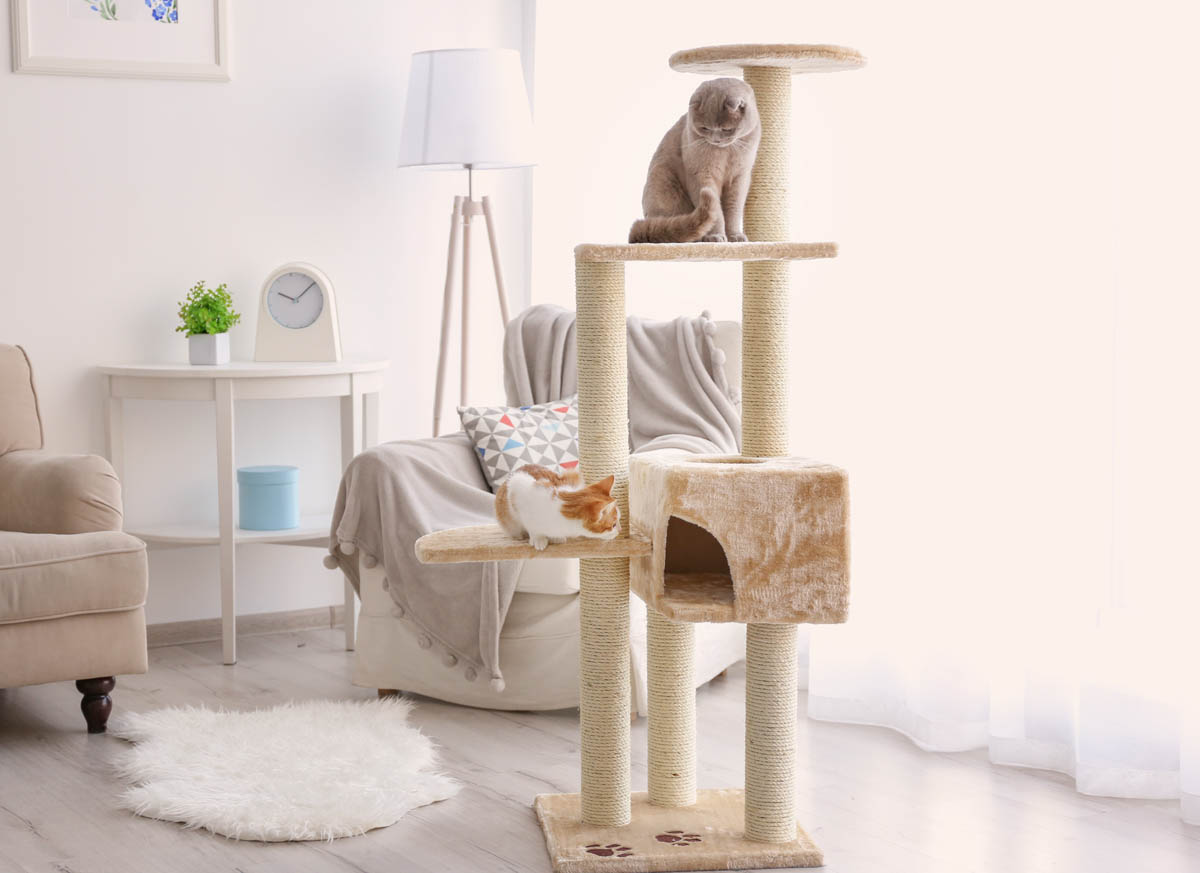
Each cat should have the opportunity for his or her own safe place, preferably from an elevated position as cats prefer high spots where they can survey their environment. Shelves, cat trees, perches all provide the opportunity for your cat to climb and watch the world from a height or sleep in a place they feel safe.
Good vantage points are also important, where practical place climbing trees where the cat has a view of the entire room and preferably can look outside. This gives the cat a safe space to retreat to if he or she wants some time away from other pets, children or visitors.
Grow cat-safe plants in the house

A grass bed can be made by adding potting mix to a large seedling tray or pot and growing grass from seed. Be careful with fertilisers and pesticides which are toxic to cats. Grass beds are cool in summer and if the grass is allowed to grow long enough, can be a hiding place.
Cat grass can provide micronutrients when ingested and in some cases can assist the cat to purge the gastrointestinal tract of something which may have disagreed with them.
Catnip and silver vine both induce a high in cats which lasts for a few minutes. The active ingredient activates the cat’s opiate receptors in a similar way to morphine, however, unlike opiates, catnip and silver vine are harmless and non-addictive.
Toys

There’s a huge variety of cat toys on the market which go beyond the trusty toy mouse. Interactive toys provide plenty of opportunities to keep the cat entertained, which is particularly important when owners are out of the house during the day.
Store-bought toys that cats love include puzzle feeders, interactive toys and toy mice. Cheap toys include a paper bag filled with dry catnip, rolled up pieces of paper, large paper shopping bags (remove the handles), boxes, bottle tops and corks.
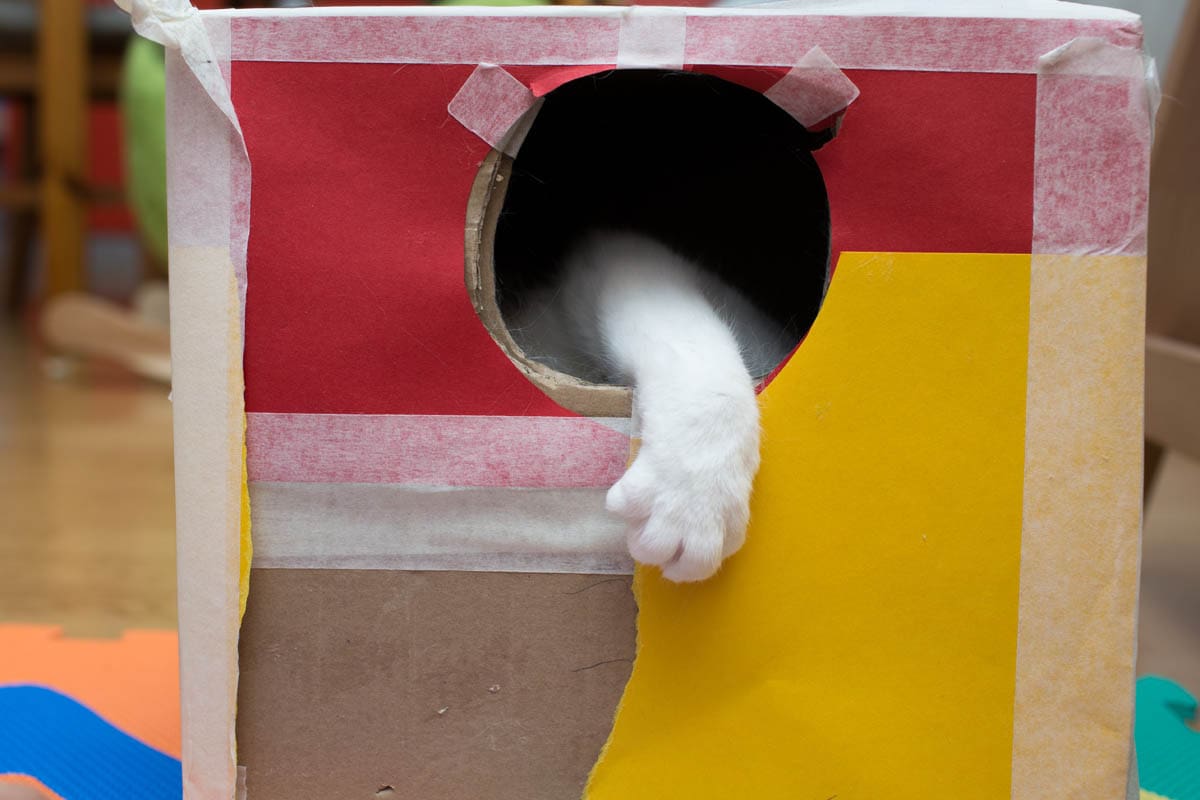
Have a wide selection of toys, but don’t leave them all out, rotate regularly to prevent boredom.
Avoid toys that are a potential choking hazard with small parts which can be chewed off and swallowed or anything long and thin (string, wool, tinsel) due to the risk of linear foreign body ingestion.
Cat exercise wheels are essentially a giant version of the hamster wheel to provide a safe indoor way to burn some energy.
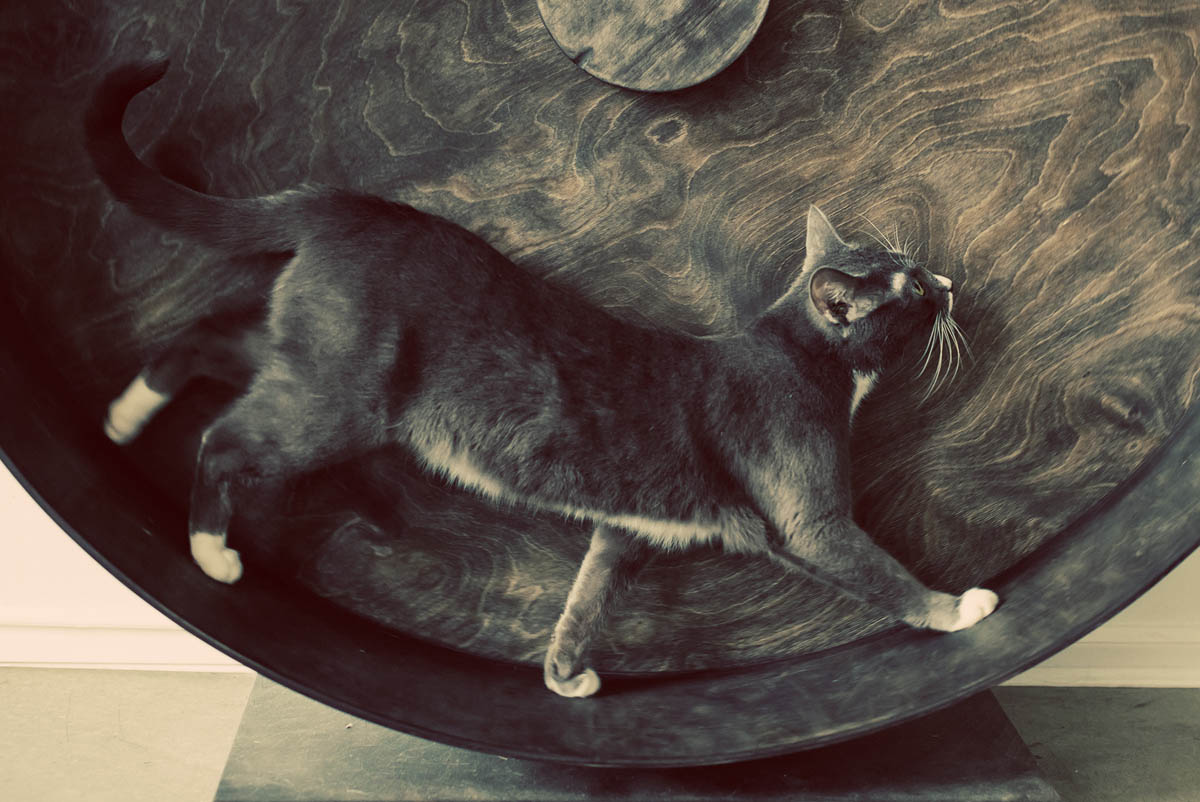
Schedule a daily play session
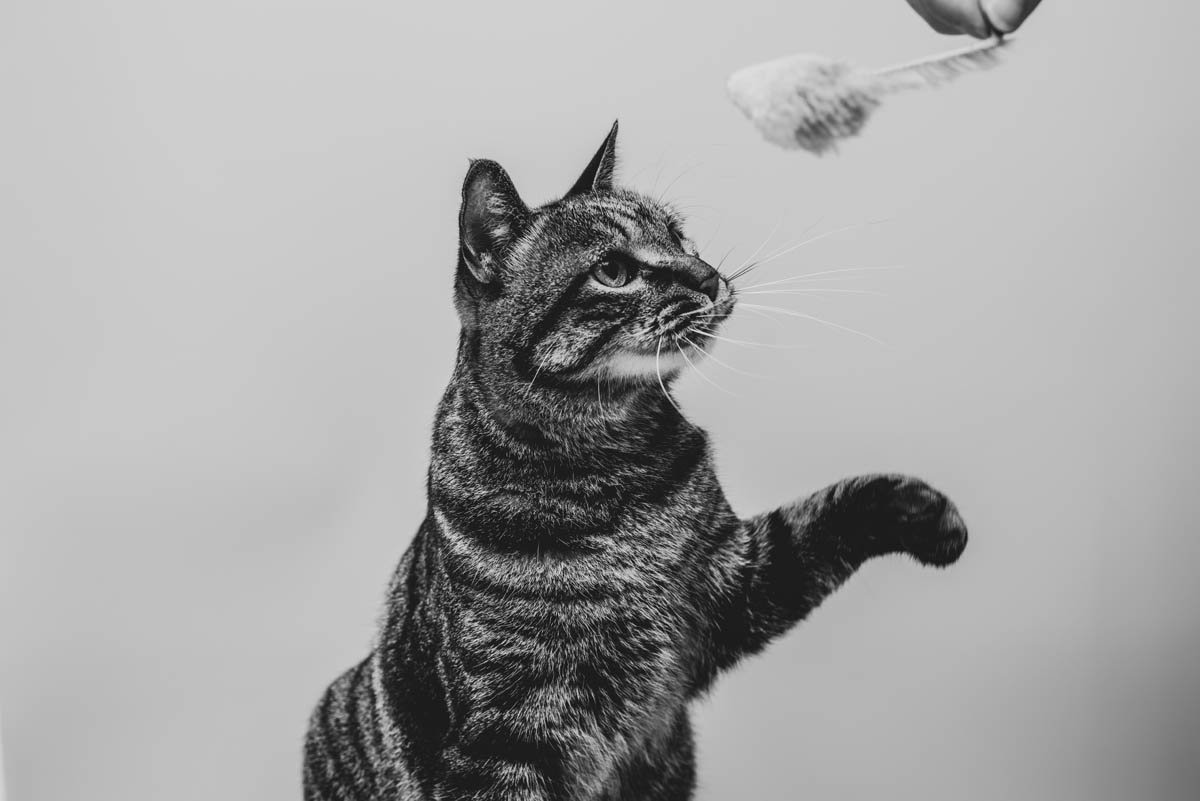
Continuing on from toys which the cat can play with alone, or with a feline companion, play therapy is also a great way to interact with a cat, provide exercise and mental stimulation. The best toys for interactive play are wand toys (my cats love Da Bird), in which the cat stalks and chases the toy. Don’t swing wands around like a rhythmic gymnast and expect the cat to throw himself up in the air over and over again.
A cat on the hunt conserves energy and will spend most of its time silently stalking prey before a short burst of energy to catch the target. Act like a mouse, move up and around furniture, move quickly when the cat strikes, if the cat catches, play dead, and then move when the cat releases his grip. Conclude the game by letting the cat catch and kill his prey, and then reward him with a meal. This mimics the cat’s stalk > strike > kill > eat > routine in the wild.
Scratching posts
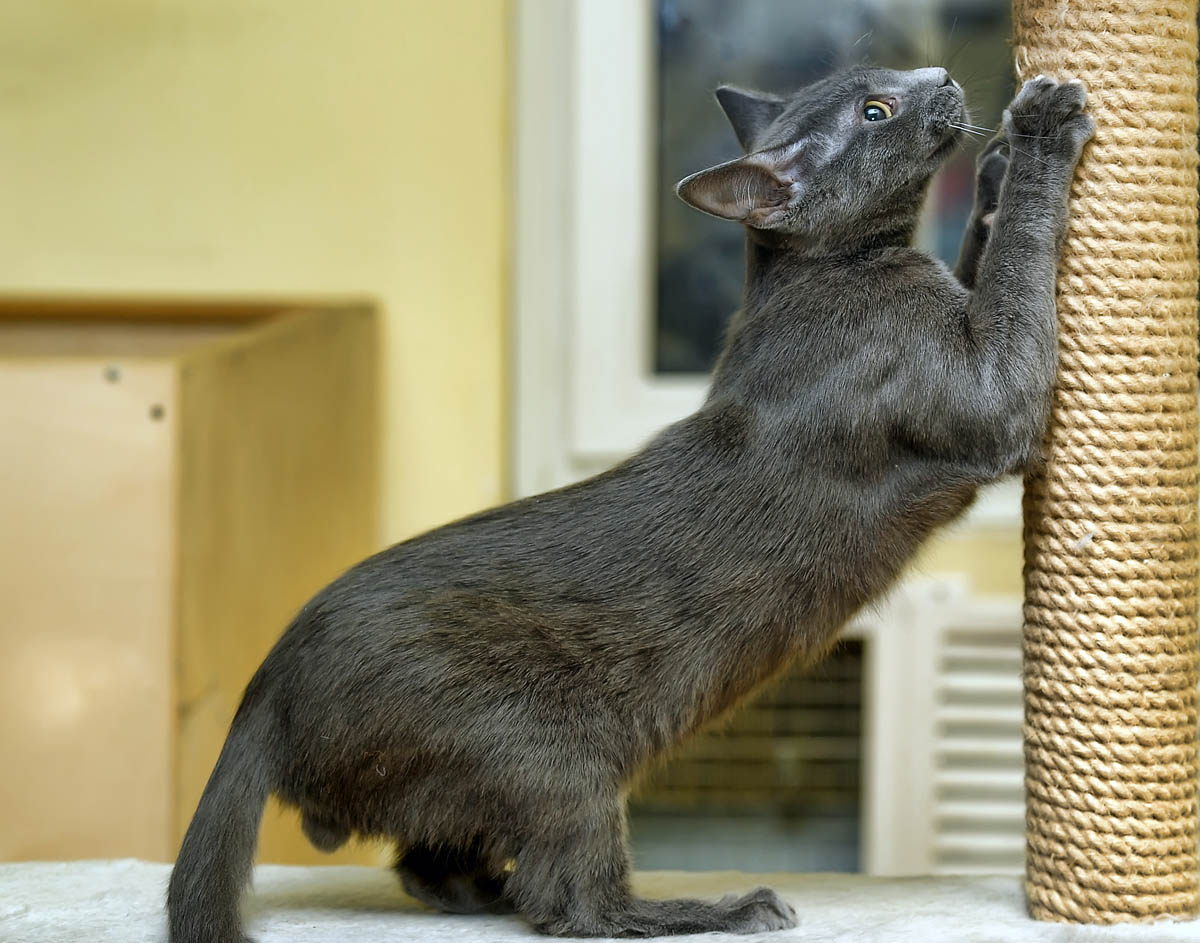
Scratching is normal behaviour, a cat scratches to stretch its shoulders, legs and claws, mark territory (cats have scent glands on their paws known as interdigital scent glands) and remove the loose outer layer of their claws.
A sturdy scratching post is a must in all homes with cats. Materials include sisal, carpet and cardboard and scratchers can be horizontal or vertical. If space permits have both types. Aim for a height of 1.5 times as tall as the cat so he can properly stretch out.
Scratching posts can be incorporated into cat trees, smaller ones can be hung over door handles, or kept on the floor. You really get what you pay for with scratching posts, there are many on the market which are cheap, but they don’t tend to last as long. Sisal rope or carpet posts are tougher than cardboard ones, and I have found cardboard scratchers tend to leave loose cardboard on the floor.
Safe places to retreat to

All cats should have a safe place they can retreat to and know that they will not be bothered by the dog, toddler or anybody else. Some cats like confined places, other cats prefer heights. One of our cats likes to sleep on top of a bookshelf, which offers him a view of the kitchen, lounge and dining room, his brother prefers to sleep in the darkness of our linen closet.
A cat in his or her safe place should be left alone. This gives the cat a feeling of control over their own environment and interaction with others.

Build a catio or cat enclosure

A catio or outdoor cat enclosure provides the best of both worlds, a safe place to go outside, but in a controlled environment without cars, dogs or predators. Verandas can be screened in or if space permits, a large play area can be attached to the house.
Remember to furnish the enclosure with cat-friendly ramps, shelves, logs or tree trunks, beds and plants.
